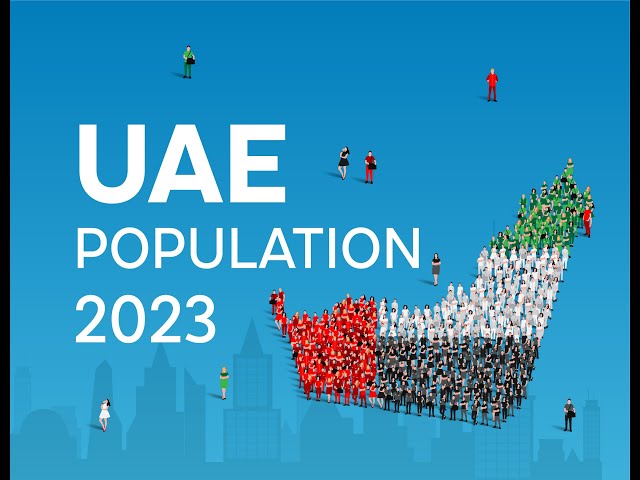Dynamic Tapestry: Exploring the UAE Population in 2023
The United Arab Emirates (UAE), a country known for its towering skyscrapers, vast deserts, and thriving economy, is also home to a diverse population. As of 2023, the demographics of the UAE have undergone significant changes, influenced by factors such as economic growth, immigration, and government policies. In this article, we will delve into the dynamics of the UAE population in 2023, exploring key trends, challenges, and opportunities.
Population Growth and Composition
Overall Population Growth
In 2023, the population of the UAE continued its upward trajectory, fueled primarily by immigration and natural growth. According to recent estimates, the total population surpassed the 10 million mark, reflecting the country’s status as a hub for international trade, tourism, and investment.
Composition by Nationality
One of the defining characteristics of the UAE population in 2023 is its multicultural makeup. Emiratis, the native citizens of the UAE, constitute a minority of the total population, estimated to be around 1.5 million in 2023. The majority of the population comprises expatriates hailing from over 200 different countries, drawn to the UAE by employment opportunities and a high standard of living.
Immigration Trends
Expatriate Workforce
The UAE has long been a magnet for expatriate workers seeking employment in various sectors, including construction, hospitality, finance, and healthcare. In 2023, the expatriate workforce remained a driving force behind the country’s economic development, contributing to key industries and infrastructure projects.
Skilled Migration
In recent years, the UAE government has implemented policies aimed at attracting skilled professionals and investors to the country. Initiatives such as the Golden Visa program have incentivized individuals with expertise in fields such as technology, healthcare, and finance to relocate to the UAE, further diversifying the country’s workforce and fostering innovation.
Refugee and Asylum Seekers
While the UAE is primarily known for attracting skilled expatriates, it has also provided refuge to individuals fleeing conflict and persecution in their home countries. In 2023, the UAE continued to host a small but significant number of refugees and asylum seekers, offering them protection, support, and opportunities for integration.
Demographic Challenges
Aging Population
Like many developed countries, the UAE is grappling with the challenges posed by an aging population. As life expectancy increases and birth rates decline, the proportion of elderly residents in the UAE is expected to rise in the coming years. This demographic shift presents implications for healthcare, pension systems, and social services, necessitating proactive planning and investment.
Gender Imbalance
The UAE has traditionally had a skewed gender ratio, with a higher proportion of males to females among both Emiratis and expatriates. While this imbalance has moderated in recent years, it remains a concern, particularly in certain age groups and nationalities. Efforts to address gender disparity include promoting female empowerment, enhancing family-friendly policies, and fostering a more inclusive society.
Sociocultural Dynamics
Cultural Diversity
The UAE’s population reflects a rich tapestry of cultures, languages, and traditions from around the world. This diversity is celebrated and embraced, contributing to the country’s cosmopolitan atmosphere and global appeal. From vibrant festivals and culinary delights to art exhibitions and heritage sites, the UAE offers a kaleidoscope of experiences for residents and visitors alike.
Integration and Social Cohesion
Despite its multiculturalism, the UAE strives to promote social cohesion and harmony among its diverse population. Initiatives such as cultural exchanges, community events, and language programs facilitate interaction and understanding among different ethnic and national groups. Additionally, the UAE places a strong emphasis on tolerance, respect, and acceptance as core values of its society.
Future Outlook
Sustainable Development
Looking ahead, the UAE is committed to pursuing a path of sustainable development that balances economic growth with environmental conservation and social progress. Initiatives such as the UAE Vision 2030 outline ambitious goals in areas such as renewable energy, education, healthcare, and infrastructure. By investing in human capital, innovation, and sustainable practices, the UAE aims to create a prosperous and inclusive future for all its residents.
Population Management
As the UAE’s population continues to grow and evolve, effective population management strategies will be essential for addressing demographic challenges and harnessing opportunities for growth. This includes measures to enhance healthcare, education, housing, and employment opportunities for residents of all backgrounds. By fostering a dynamic and resilient society, the UAE can navigate the complexities of demographic change and emerge stronger than ever before.
Conclusion
The population of the UAE in 2023 reflects the country’s dynamic and cosmopolitan character, shaped by immigration, economic development, and cultural exchange. With its diverse population, the UAE stands as a testament to the power of tolerance, inclusion, and innovation in building a thriving society in the modern age. As the country looks towards the future, it remains poised to embrace the opportunities and challenges that lie ahead, guided by a vision of prosperity, sustainability, and social harmony.



